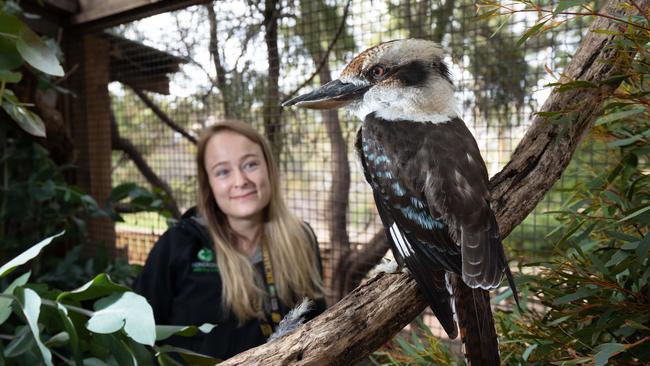Cull of feathered kookaburra icon no laughing matter
The culling of kookaburras may soon become a reality, with new data showing the iconic species’ damaging spread.

Culling of kookaburras is being considered in Tasmania, with new data showing the species, an introduced pest in the island state, has spread to remote and wild areas.
The latest BirdLife Tasmania surveys show laughing kookaburras, introduced shortly after Federation to “unite the new nation”, have colonised new areas in the island’s west, south and highlands for the first time.
Iconic nationally but regarded by many Tasmanians as a feral pest, kookaburras are known to kill, outcompete and displace smaller native birds and devour a variety of other species.
For decades largely confined to eastern parts of the state, the species is now on the doorstep of the South West Wilderness. The state government said selective culls may be needed.
“Total eradication would not be feasible but the (relevant) department may consider control of kookaburras in specific circumstances,” a spokeswoman said.
This could include culling kookaburras to protect the highly endangered orange-bellied parrot at Melaleuca, in the SWW.
Greg Irons, who runs the state’s main wildlife rescue service, told The Weekend Australian it was time to consider a kookaburra cull. “I’m 100 per cent behind it (a cull) — it’s always met with a backlash, and we’d want to make sure it’s done in a humane way and very carefully,” he said. “But no one bats an eyelid about a rabbit and this is no different.
“The damage kookaburras do is absolutely phenomenal … They kill thousands of native species. It costs taxpayers, over time, millions upon millions of dollars because they are killing the same species that we are trying to save.”
Mr Irons, director of the Bonorong Wildlife Sanctuary, north of Hobart, which runs a major 24/7 wildlife rescue service, revealed his centre had recently been given official blessing to euthanise sick or injured kookaburras. Until about six months ago, it had been obliged to treat the birds, despite experts saying they outcompete or displace a wide range of native Tasmanian species, including honeyeaters, robins, rosellas, masked lorikeets, tree martins, swift parrots and blue-winged parrots.
“If we take a starling or a sparrow or even a mouse, rat or a rabbit, there is no public expectation to look after it and those animals are euthanised immediately because of the damage (they do),” Mr Irons said.
“But up until very recently, we weren’t allowed to euthanise a kookaburra if it came in injured because of the public perception, when the reality is they do the same, if not greater damage, than these other species.”
The government confirmed the policy shift. Bonorong has kept some kookaburras to educate people about them.
Eric Woehler, convener of BirdLife Tasmania, said kookaburras were spreading as western and southern areas dried and warmed, becoming more suitable for them. He said more research on kookaburra densities and impacts should be conducted before a cull was considered.
“They will almost certainly have had an impact on native species, but we can’t give figures on the extent of that impact,” Dr Woehler said.




To join the conversation, please log in. Don't have an account? Register
Join the conversation, you are commenting as Logout